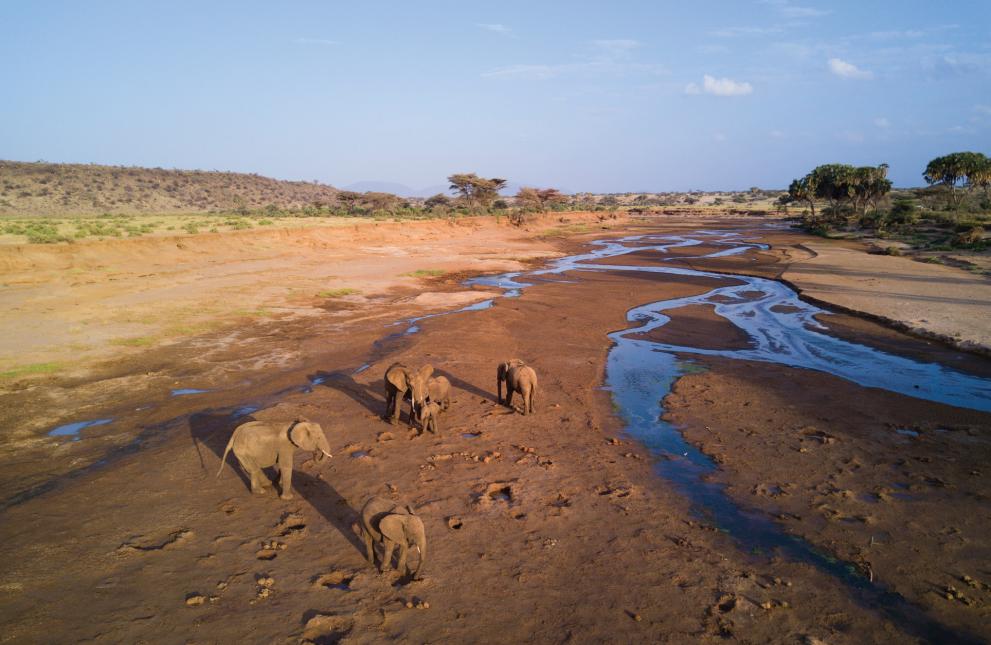
JRC scientists discuss their contribution to the 3rd edition of the World Atlas of Desertification, presented to Brussels-based political stakeholders today.
The 3rd edition of the World Atlas of Desertification (WAD3) illustrates the state of land degradation since 1998.
It was compiled by JRC scientists Michael Cherlet (main author), Melanie Weynants, Federico Gianoli, Pierlorenzo Marasco and Desirée Johansson.
We had a chance to discuss with Michael and Melanie their contribution, how they see the state of land degradation today, and how science can help direct us in the right direction.
Q: Michael, the Atlas is called World Atlas of Desertification, but you mentioned that it is really about land degradation. Why did you choose this title?

Michael: "We chose that title because the Atlas is a follow-up to two previous editions. The first two were published in 1992 and 1997 by UNEP (now UN Environment).
They reflected the understanding of desertification of the time. WAD3 appears 20 years after the 2nd edition, and it goes without saying that it begins at a very different place in terms of scientific information and understanding.
We think that it is currently not possible to capture 'desertification' or land degradation in global maps because of the complexity of it, and the new Atlas does not attempt to do that.
This Atlas calls for a 'rethinking of land degradation and sustainable land management' and although 'desertification' remains in the title, it uses a completely different approach with respect to the first two editions."
Q: In the WAD3, you discuss different forms of land degradation. Can you briefly describe them?
Michael: "In WAD3, we refer to land degradation as the long-term failure to balance the demand and supply of ecosystem goods and services. These services include, for instance, the capacity of the land to provide food, purify air and water, control agricultural pests, and moderate the weather.
If the land is degraded, it is not able to provide these services. This has a direct impact, for instance, on our capacity to grow crops and vegetables.
It is a global problem which however needs solutions that are adapted to specific local conditions. In WAD3, we present examples of sustainable land management practices that can halt or revert land degradation."
Q: You have created a series of maps which show the convergence of global change issues. What does it mean?
Michael: "The term 'global change issues' refers to drivers such as change in population density, changes in built-up area, aridity, water stress, decreasing land productivity and tree loss – to mention just a few out of the 14 change issues we identified. The presence of many of these issues in one specific location suggests that there is risk of land degradation in that location.
The global maps that we created show where these places are and therefore, which are the places in the world that have the highest risk of land degradation.
Of course these maps are theoretical. In order to know whether the risk really exists one needs to consider the local context, on-going adaptation measures etc. But they enable to realise where there might be issues, precisely so that the local actors can take this into consideration, for instance in urban planning."
Q: Melanie, the Atlas shows land degradation almost everywhere. Is that really so?
Melanie: "The fact is that there is virtually no place on Earth that has not been impacted by humans. However, even if the human exploitation of the Earth cannot be avoided, we have a moral obligation to ensure that it is done sustainably, if only to preserve its productive capacity for future generations.
If human activities lead to persistent degradation of the land, ecosystems won’t be able to provide the services humans need for their survival. Indeed, the picture may seem daunting, but we also put forward solutions to halt and even revert land degradation. It is mostly a question of raising awareness among decision makers and the general public."

Q: You mention new technology and the forceful impact of satellite imagery in the WAD. Can you say something about that?
Melanie: "The WAD was an ambitious project. We wanted to understand where the planet's land is degrading today, what forms it takes and how this can be tackled.
So we embarked on this project to collect global datasets from a wide range of sources. They all address a certain aspect of land degradation.
The first parts of the Atlas present this wealth of information. Many of the maps there rely on data from Earth observation satellites. In recent years, the availability of ever expanding archives of satellite data has enabled scientists to analyse changes in the environment.
WAD3 includes maps which depict the changes in surface water, forest cover, fires and land productivity, to cite only a few. Earth observation allows us to strengthen our understanding of what processes occur and where. Analysed together, those maps enable us to see some patterns that can lead to land degradation."
Q: The WAD captures the changes to land degradation in the last 20 years. Can you tell us, what are the most important changes you detected during that period?
Melanie: "Some patterns that emerge from our analyses reflect old concerns. For example in the Sahel and Eastern Africa, we see the coincidence of yield gaps, decreased productivity and chronic low-income. In the Chaco in Argentina, Paraguay, and Bolivia, , the transformation of forest to irrigated farmlands threatens vast areas. In Europe (and North America), urban expansion is consuming land resources and high-intensive agriculture requires large, continuous inputs of nutrients.
There are some familiar patterns, which come with new concerns. In the Indo-Gangetic plains and Northern China the coincidence of many issues raises alarms. They are characterised by high population densities, dependence on high inputs of fertilizers, and persisting low income levels. The alarming decline of groundwater in both areas may foreshadow significant problems in the future, particularly in the face of climate change
There are also new patterns which cause new concerns. For instance, the vast wheat-producing region developed by the former Soviet Union emerged as an area of concern. There agricultural operations are seen as a potential opportunity to increase global agricultural production but being low-input farming they are under increasing pressure."
The 3rd World Atlas of Desertification (WAD3) is available for free.
Related Content
Details
- Publication date
- 26 November 2018
